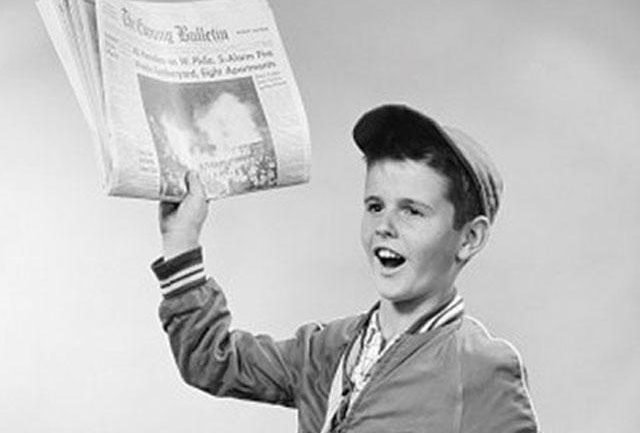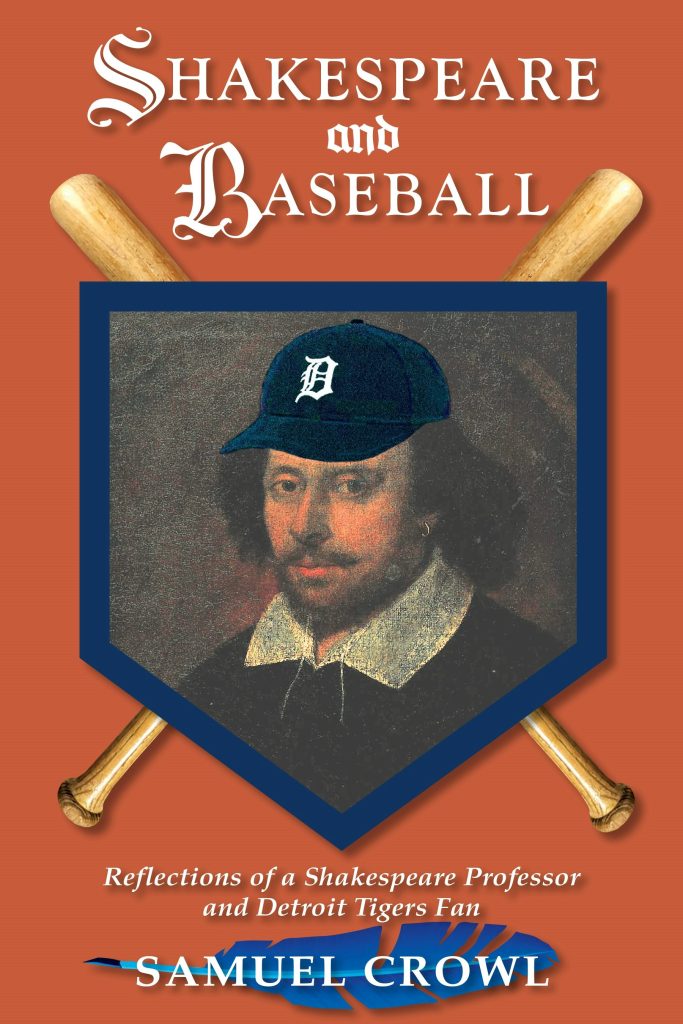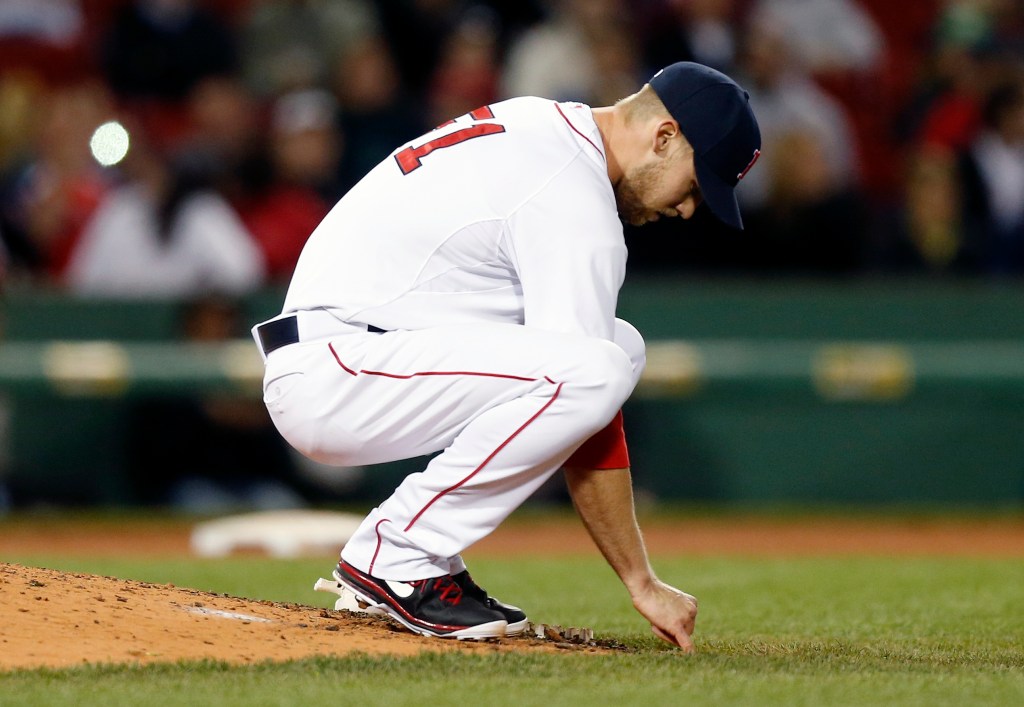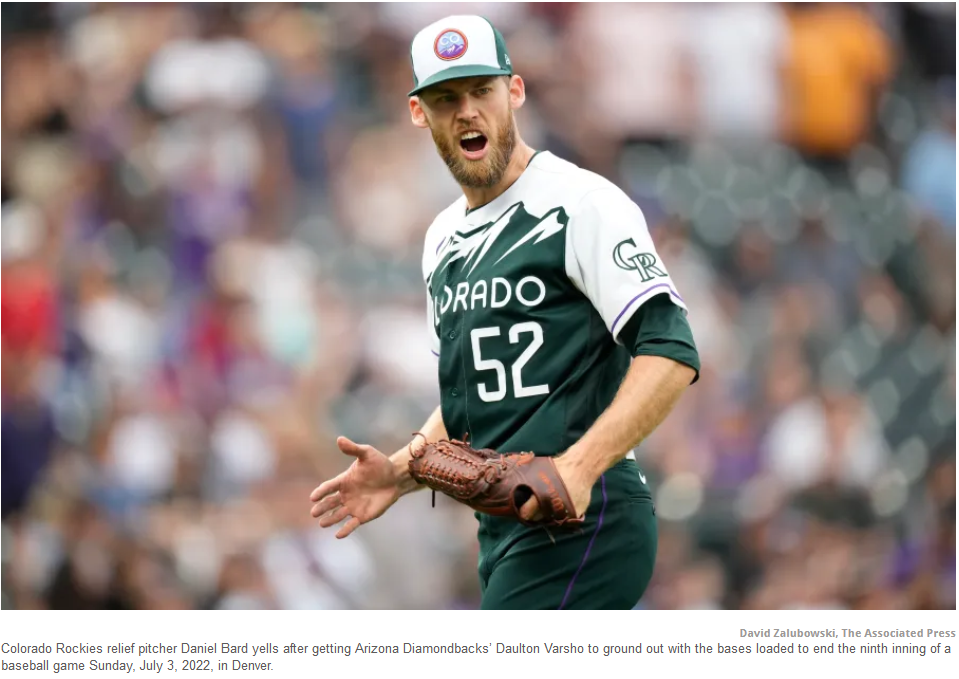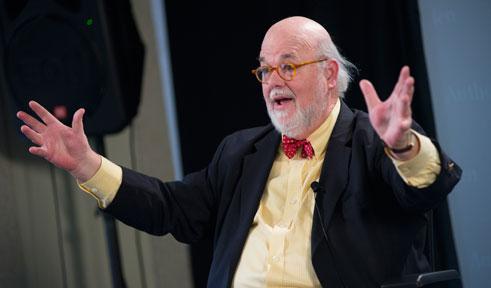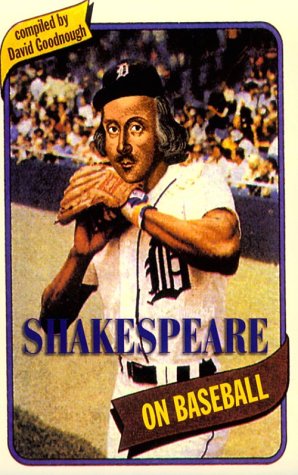“Baseball: The Movie”

The author:
Noah Gittell
The publishing info:
Triumph Books, 304 pages, $30
Released May 14, 2024
The links:
The publishers website;
the authors website;
at Bookshop.org; at Powells.com;
at Vromans.com; at {pages a bookstore}; at BarnesAndNoble.com; at Amazon.com
“Mike Donlin: A Rough and Rowdy
Life from New York Baseball Idol to
Stage and Screen”

The authors:
Steve Steinberg
Lyle Spatz
The publishing info:
University of Nebraska Books, 368 pages, $39.95
Released May 1, 2024
The links:
The publishers website;
The authors website (Steinberg); the authors website (Spatz);
At Bookshop.org; at Powells.com; at Vromans.com; at {pages: a bookstore}; at BarnesAndNoble.com; at Amazon.com
The reviews in 90 feet or less
A six-part series airing on Turner Classic Movies channel rolled out earlier this year called “The Power of Film,” and it led off with an episode that explained the dynamics of what makes a movie both popular and memorable. They are definitely not the same.

Howard Suber, an esteemed UCLA film professor who wrote a book about this topic with the same title in 2006 after teaching this course in Westwood for many years to thousands of students, agreed to do this series. It not only is trying to enlighten those aspiring to be directors, producers or screen writers, but it is really for movie lovers — like TMC viewers — to better understand why they’ve had these connections to certain films over the years, how it is they’re able to watch them over and over again, and what leads them back for reinforcement.
Common themes that resonate in our soul and we see that portrayed on the screen are often about family. Or power. Or the fragility of life. These themes go back 2,500 years in our course of historical storytelling.
Film clips come up during this hour-long series opener, and Suber shows the ties that bind “The Godfather,” “Casablanca,” “Citizen Kane,” “A Star is Born,” “Do The Right Thing” or “The Exorcist.”
At one point during a montage, there is a quick flash of a scene from the 1992 “A League of their Own” — Geena Davis, as Dottie Hinson, bare-hand catches a ball thrown at her without showing any emotion. Awe inspiring. And powerful.
When we saw that clip, we flashed back to the September 2023 book, “No Crying in Baseball: The Inside Story of ‘A League of their Own: Big Stars, Dugout Drama and a Home Run for Hollywood” by Erin Carlson. We reviewed it last year and thoroughly embraced all the info there that confirmed what we suspected: The girls just wanted to have fun. And they did, making history along the way.
But in this TCM series context, “A League of their Own” explained how this is about a family, of baseball players. It was about overcoming odds, from the perspective of women just looking for a chance. It involved power — empowering them to show their worth. It checked off so many boxes that baseball was just a convenient entry point to another version of storytelling as old as time.
Now, we can take that movie, and more, to the next level.
Noah Gittell, a writer and critic whose work has been in the L.A. Review of Books as well as Esquire and Washington City Paper, and currently on his own Substack platform, uses his experiences to crank out his first book on how baseball can be the centerpiece of film, and it has been for more more than 100 years. It’s a commonality that makes it resonate on many levels.
Books on this subject have drifted in and out of our space. In 2017, there was “Baseball Goes to the Movies” by Ron Backer/Applause Books. Others like “The Baseball Film: A Cultural and Transmedia History” in 2022 was far too academic for us. “Great Baseball Films: From Right off the Bat to A League of their Own” by Rob Edelman in 1994 is more in line with this Gittell project, going over nearly 200 baseball films (and also revealing what wasn’t so great). But as the date shows, it’s about 30 years in need of an update. (Edleman also wrote the SABR biographies of Buster Keaton and Mike Donlan, which we will soon get to later).
Before that was Hal Erickson’s “Baseball in the Movies: A Comprehensive Reference, 1915-1991” and Gary E. Dickerson’s “The Cinema of Baseball: 1929 to 1989” another noble scholarly effort. Still, outdated.

In 2019, the Society of American Baseball Research, as part of its project to celebrate its 50th year, also did its own review of baseball films and what it has meant in popular culture: It posted its 50 of the most memorable baseball-related moments in films and television for the past half century, compiled by Mark Armour with Jim Baker, Michael Bates, Michael Bender, Emily Hawks, Jeff Katz, R. J. Lesch, Bruce Markusen, Justin McGuire, Rob Neyer, Steve Roney, Gabriel Schechter, Tom Shieber and Cary Smith.
What sets Gittell apart here is its personalized approach, much like how someone would describe their own baseball cards. To get the true effect, listen to him read it aloud on the audio versions made available.
As he writes in the intro, “Hollywood exists to provide the glorious catharsis life rarely does, but the baseball movie, a collision of two dreams, is a little different. It returns us to a heaven we’ve already glimpsed. … Baseball movies are important. They develop fans of the game by drawing out its drama and revealing its humanity. Let’s be honest: Baseball players aren’t always so forthcoming about their inner lives, their hopes, and their fears. The league doesn’t help us to get to know them; particularly in recent years, it has been terrible about marketing its stars. We need the movies to show us what it feels like to be on a hot streak or stuck in a slump … The cynics … shake their heads and say baseball movies are cheesy and unrealistic. … Pay them no mind. These people misunderstand baseball, as well as the baseball movie. The disappointment is real, but so is the magic. If we believe in Kirk Gibson, we must believe in Roy Hobbs.”
It would be easy to spoil the exploration and prose Gittell uses to reel us back into baseball reel-ism. The parallel histories of film and baseball don’t always connect well, but when they do, it’s magic. Like a Robert Redford home run. This is how film explains baseball, and vice versa, and how both explain our American experience.
Twenty four baseball-centic films are covered by name in 18 chapters, with the final chapter interestingly enough devoted to the burgeoning genre of faith-based movies that use baseball as a narrative. Quite inspiring.

“A League of Their Own,” of course, is included — as is a blurb from the previously referenced book. Erin Carlson writes: “Nostalgic, smart and entertaining all at once.”
As for the film, Gittell slots in Chapter 3 about “The Nostalgia Boom,” and pairs it will well with the 1988 “Bull Durham” as flicks that “tell stories about people who had long been relegated to the sidelines in baseball cinema — women and minor leaguers — with incredible craft, great humor and strong baseball accumen … (they are) ideal surrogates for 99 percent of viewers.”
Gittell also connects dots to “A League of Their Own” back to Tatum O’Neal’s 1976 role as Amanda Whurlitzer in “The Bad News Bears.” Furthermore, it’s likely no accident that the 1991 hit movie “Thelma and Louise” happened to also connect its two leads again — Davis in “A League of Their Own” and Susan Sarandon to “Bull Durham” as an extension of rebel friends and outlaws, showing women shine in a male-dominated world.
The scene where Davis, as Dottie Hanson, makes that bare-hand catch is about cool power amidst “effortless beauty of a supermodel,” Gittell writes. And the “endless debate” about the film’s climatic scene — did Dottie drop the ball after tagging her sister Kit trying to score the winning run? “(The debate) has helped keep ‘A League of Their Own’ alive in public discourse. For that reason, it matters. The truth, however, is there is no right answer because we’re asking the wrong question. It’s not important whether she intended to drop the ball. What matters is why the film needs her to. Throughout the film, Dottie is conflicted between being a housewife or a ballplayer. To some degree, it’s the conflict within all the players, and the film rightly passes no judgment either way. … Roger Ebert credits this nonjudgmental approach to its women’s director.”
That would be Penny Marshall, who “shows her women characters in a tug-of-war between new images and old values, and so her movie is about transition — about how it felt as a woman suddenly to have roles and freedom.”
Gittell concludes: “The commercial success and the enduring legacy of ‘A League of Their Own’ in a genre once defined solely by its maleness has permanently redefined what a movie — not just a sports movie, and certainly not only a baseball movie — can be.”
A synopsis that Howard Suber might consider pretty super.
One of the sidebars to Gittell’s book is a list of famous baseball scenes that aren’t in “baseball” movies. No. 2 on his list — after all the baseball stuff that was in “Ferris Bueller’s Day Off” — are two movies by Buster Keaton, “College” and “The Cameraman.”
Gittell notes that Keaton adored baseball and at the Keaton Production Company, he would order his employees to play a game of baseball every time they were faced with a difficult problem on the set. “If a solution struck in the middle of the game, they’d throw down their mitts and resume shooting.”
In the 1927 “College,” Keaton tries to woo a co-ed by becoming an athlete, and makes a fool of himself trying to play baseball. Including getting his foot stuck on first base.
In 1928, “The Cameraman” is about Keaton assigned to photograph Babe Ruth, and the cameraman arrives at Yankee Stadium only to find out the Yankees are in St. Louis. So Keaton takes the field and mimes playing baseball to play out a childhood fantasy. His athleticism is on full display. It’s very real. He runs the bases “with wild abandon. It was easily the best baseball action every put on film at this point in history — all without a baseball.”

In Keaton’s 1926 film, “The General,” one of the actors is a fellow named Mike Donlin.

In the heavy-duty bio of multi-faceted Donlin by esteemed SABR authors Steve Steinberg and Lyle Spatz, the tone is set right away with a Paul Gallico quote before the table of contents:
“You learn eventually that, while there are no villians, there are no heroes either. And until you make the final discovery that there are only human beings, who are there all the more fascinating, you are liable to miss something.”
After that, it’s gravy. Until you also come to the Dixon Weite quote on page 149 that adds: “Celebrity is paradoxically and pathetically the death warrant of a celebrity.”
Donlin was, believe it or not, the most popular ballplayer in New York at one point — that’s Chapter 21, focused on his time with the New York Giants, on John McGraw’s 1905 World Series title team, with a .333 career batting average. Overlapping, in 1908, he is doing a stage show called “Stealing Home,” for three years with his wife, vaudeville comedian Mable Hite.

Having made the switch from baseball to acting, he then goes from stage to the silver screen — including Paramount’s first sound feature, “Warming Up” in 1928.
“Turkey Mike,” as he was called because of his unique way of strutting to the plate (which he hated), became a baseball idol that couldn’t quite measure up in other entertainment venues. “Flickers” were getting popular, and Donlin strutted to a new medium. He starred in a movie about his life in 1915, then, with side trip to teach baseball to recruits during World War I, he migrated to Hollywood, where he found regular employment for much of the silent pictures era. From there, a life as a drinking buddy with John Barrymore does more damage than good. Hite’s early death precipitated much of that lifestyle choice, as he worked his way to Hollywood to see what he could do. Until his 1933 death at 55. Still, Donlin was the most successful of the ballplayers in Hollywood with about 60 roles between 1917 and 1935, many uncredited.
To think it all started with hoping a train from Peoria to California and a stint with the Santa Cruz Sandcrabs in 1899. And it may go on today as the 1949 musical, “Take Me Out to the Ballgame,” written by Gene Kelly and co-starring Frank Sinatra, is said to be influenced by Donlin’s life story.
How they go in the scorebook
For every lights-camera- action, there is an equal and an opposite reaction, right?
If baseball’s history on film seems to be impactful in the past but lacking any recent traction, or attraction, as patrons are more used to seeing documentaries and less dramatic re-enactment, what can be done?
If possible, refer to how Ron Shelton wrote “The Church of Baseball: The Making of ‘Bull Durham’: Home Runs, Bad Calls, Crazy Fights, Big Swings and a Hit,” as we reviewed here, and see it as more of a cautionary tale about how to make a movie that happened to be about baseball.
As Gittell writes again: “Any institution that’s around for a century and a quarter will have to reinvent itself a few times to remain relevant. That’s the story of cinema and baseball. They’re not dying. They’re just in flux, as they always have been … The baseball film is uniquely positioned to explain America — but its popularity will depend on the mood of the nation. … As a film critic and a lifelong fan of the game, I wrote this book to spend time with my two great loves and deepen my understanding of their union. I wanted to share their secrets.”
Mission accomplished. With “Baseball: The Movie,” we get the personal connection. With “Mike Donlan,” we get more baseball and film, and this feels like the sweet spot for both to get their closeups.
You can look it up: More to ponder
= Referencing back to the April 1, 2024 review on Waite Hoyt’s autobiography, check out this post on his official X account — a story from his book:
== On the topic of “A League of Their Own,” there’s a new credit card commercial with Jennifer Garner bringing back a famous scene that uses nostalgia as a way not to connect with legal loan sharking. We’re not sure this is credible.
== Gittell wrote this story about the movie “Moneyball” for The Decider
== On his Substack account, Gittel has a post: How to write a book (based on the way he has done this).
== Mike Donlan’s bio from the SABR project that is more about his playing career.

